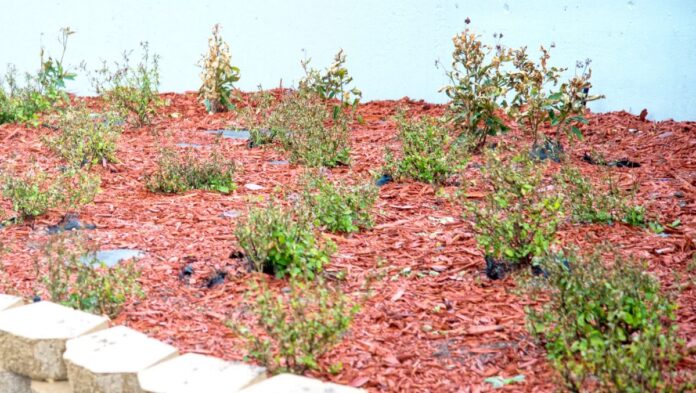HARLINGEN — Parks and Recreation Department officials say the hammering from multiple cold fronts this winter has stressed plants in city garden areas and they are monitoring them to see if they’ll bounce back as the weather warms up.
“The weather’s crazy,” Jeff Lyssy, parks and recreation superintendent, told the Keep Harlingen Beautiful board yesterday. “It’s like the coldest weather since I’ve been here, and that’s 23 years.”
A Valley-wide freeze occurred this year on Jan. 16-17, which was the first time that happened since last January, and on Jan. 3, 2018, many but not all areas of the Valley experienced a freeze. In December, two other cold fronts swooped south as well.
Lyssy said several garden plots planted in the last few months have been hit hard by cold.
“I think it might have adversely affected some of our plants because some of them look like they’re cold-stunned, especially on Loop 499, and the other example is Memorial Middle School where we planted that huge line of esperanzas,” he said. “They do not like this weather at all and they look not very good at all.”
Lyssy said another area the city cleaned up, planted and mulched along the canal on Cleveland Avenue also shows signs of weather-related stress.
“If you drive by some of these canal banks we did, and you look at them and go ‘wow,’ because a couple I saw on 25th Street, those Jatropha don’t like the weather at all,” Lyssy said. “Hopefully, they’ll come back. Otherwise, we’re going to have a large landscaping party with a lot of community service hours.”
Lyssy said the plants hit hardest are in open areas, with Loop 499, Cleveland Avenue and 25th Street being examples. In areas near houses or other structures, he said cold weather browning doesn’t seem to be as fierce.
“Also, if you go by McKelvey Park, we’ve planted two mass plantings of fire bush and they appear to be stunned as well,” he said. “Fire bush is what I’ve especially seen, as well as the Jatropha trees.”
Lyssy said there’s little his crews can do at present, and he hopes the situation will resolve itself with the affected fire bush, esperanza, crown of thorns, blue plumbago and Jatropha bouncing back with the coming of warmer weather.
But he’s not taking any chances.
“I don’t really intend to plant a lot of plants in the near future until we hit the spring,” he said.
Jan. 16-17, 2018, was the first complete Valley-wide freeze since Jan. 7, 2017, as temperatures in all areas reached 32 or lower for a few hours everywhere. This was not the case on Jan. 3, 2018, which fell just short.
Consecutive hour duration of freezing temperatures ranged from three to five hours in typically warmer pockets, to 15 to 30 hours in colder pockets, particularly from Hebbronville through the King Ranch extending south into Weslaco, Harlingen and Raymondville.
This was the longest consecutive hour freeze since Feb. 2-5, 2011 – but nowhere close to that event, which typically ranged from 36 to 60 hours across the region.
Ice accretion was marginal, but typically ranged from 1/10th to 1/16th an inch on trees, branches, vehicle antennae, etc. This was significantly less than what occurred on Feb. 3-4, 2011 (up to 1.5 inches in some areas) and even Jan. 29, 2014. The main reason? Precipitation was much finer, with accumulation below 0.05 inches. February 2011 had values generally from 0.25 to 0.5 inches of liquid equivalent.
Source: National Weather Service/Brownsville




